
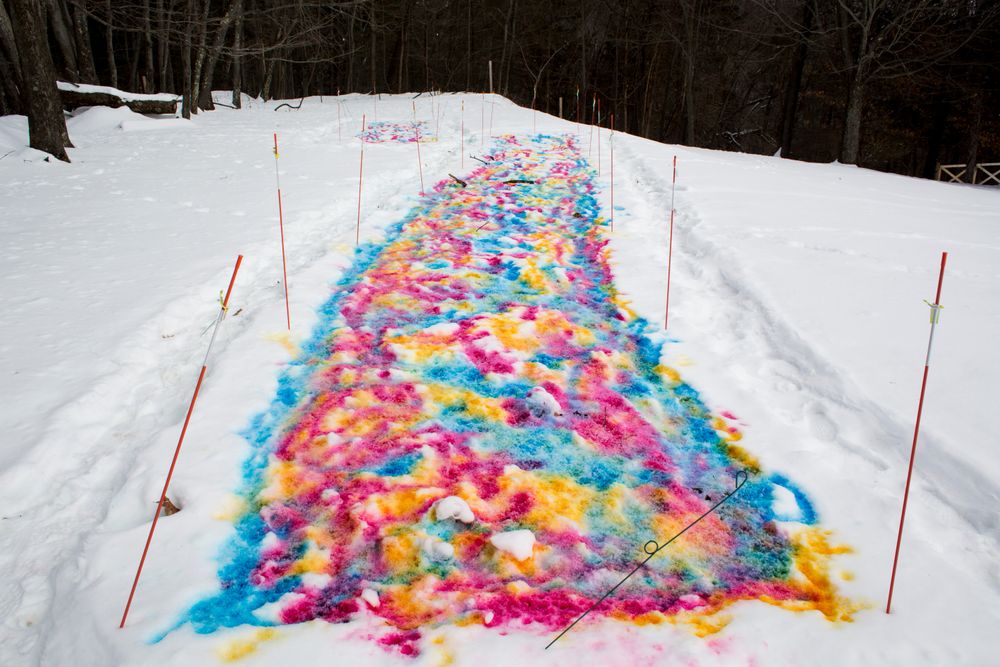
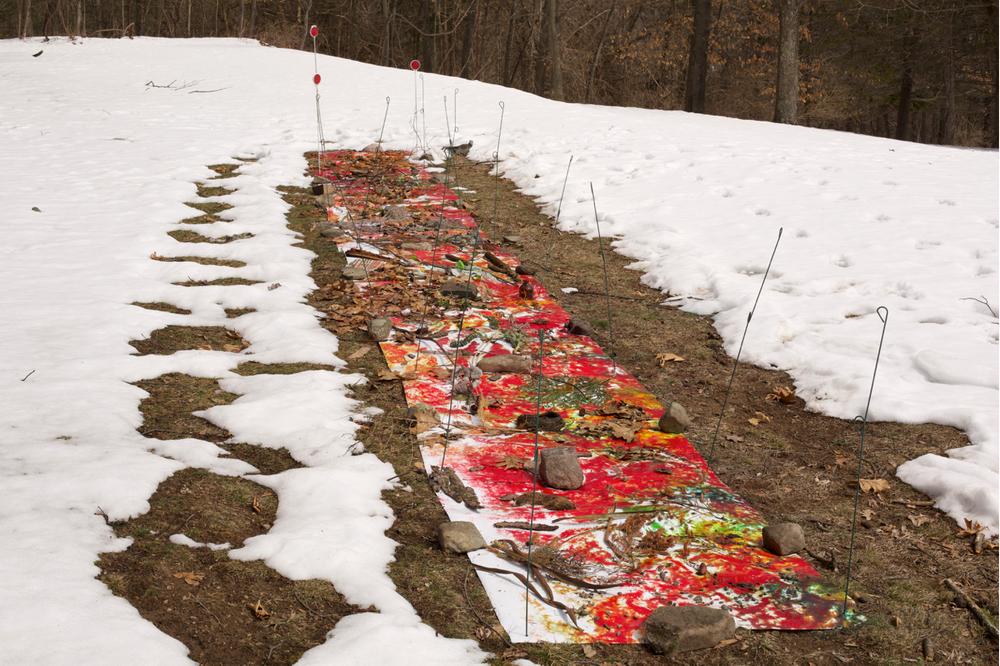
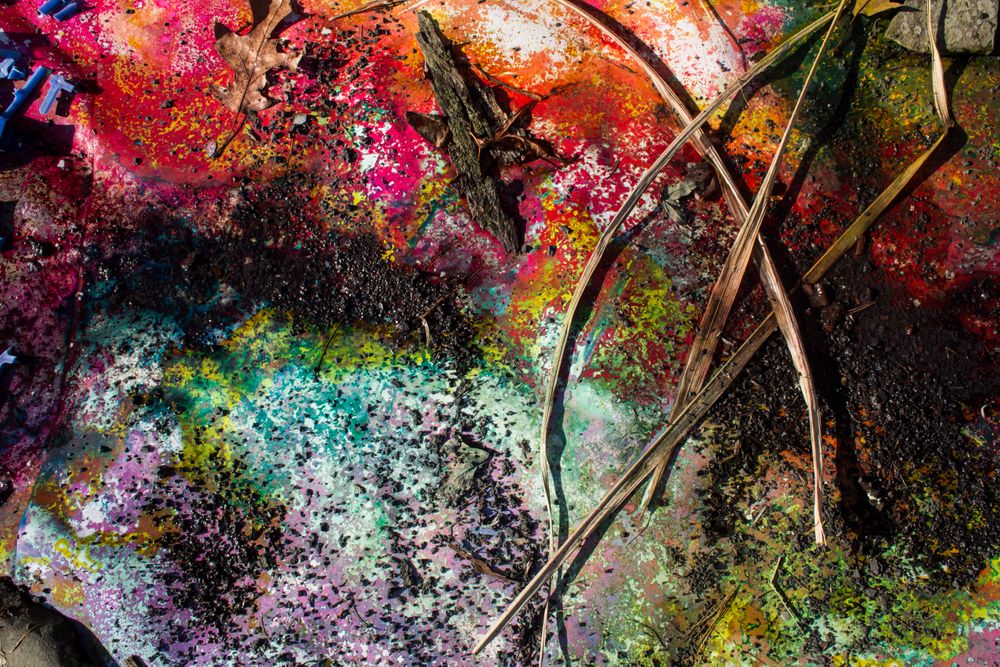
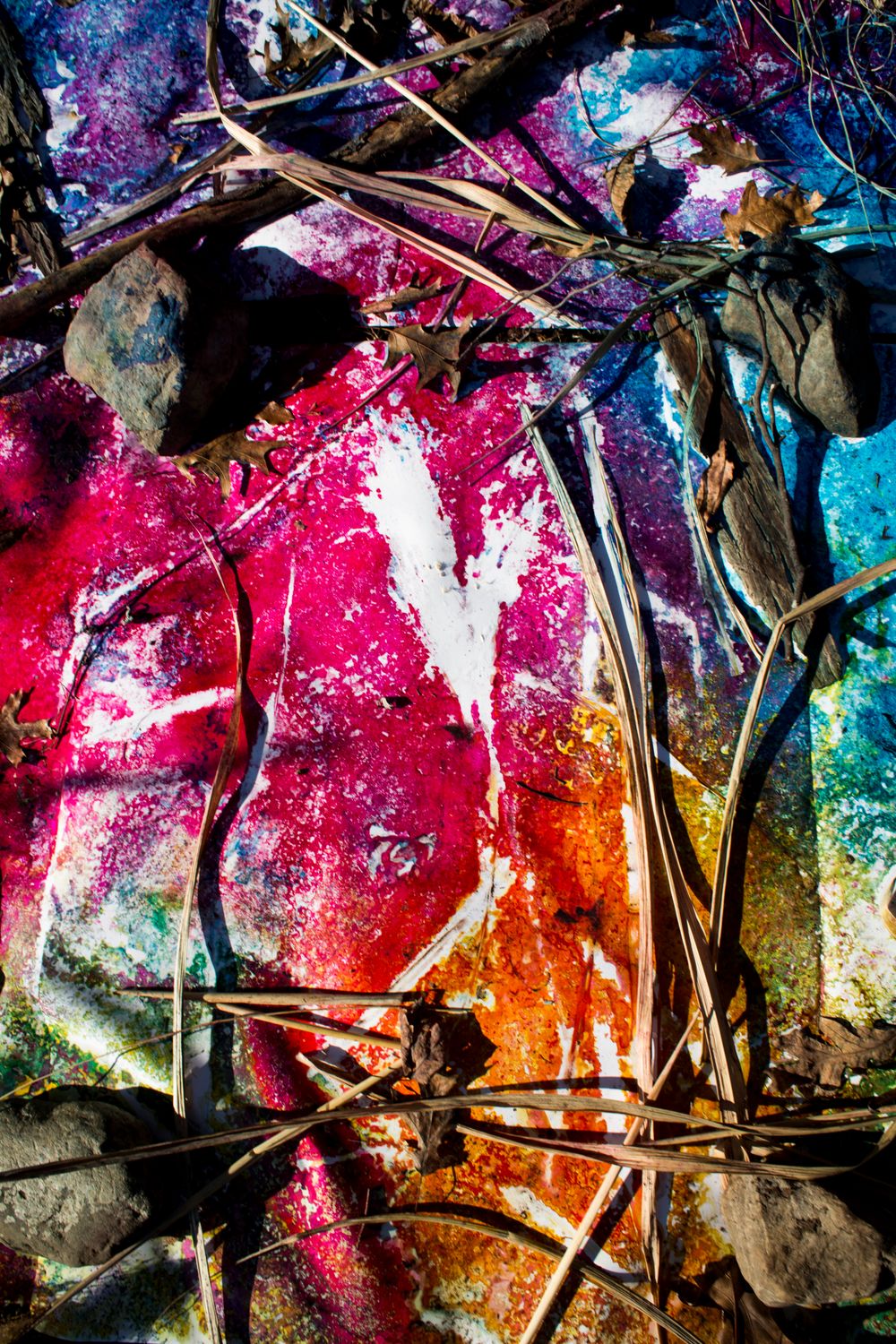
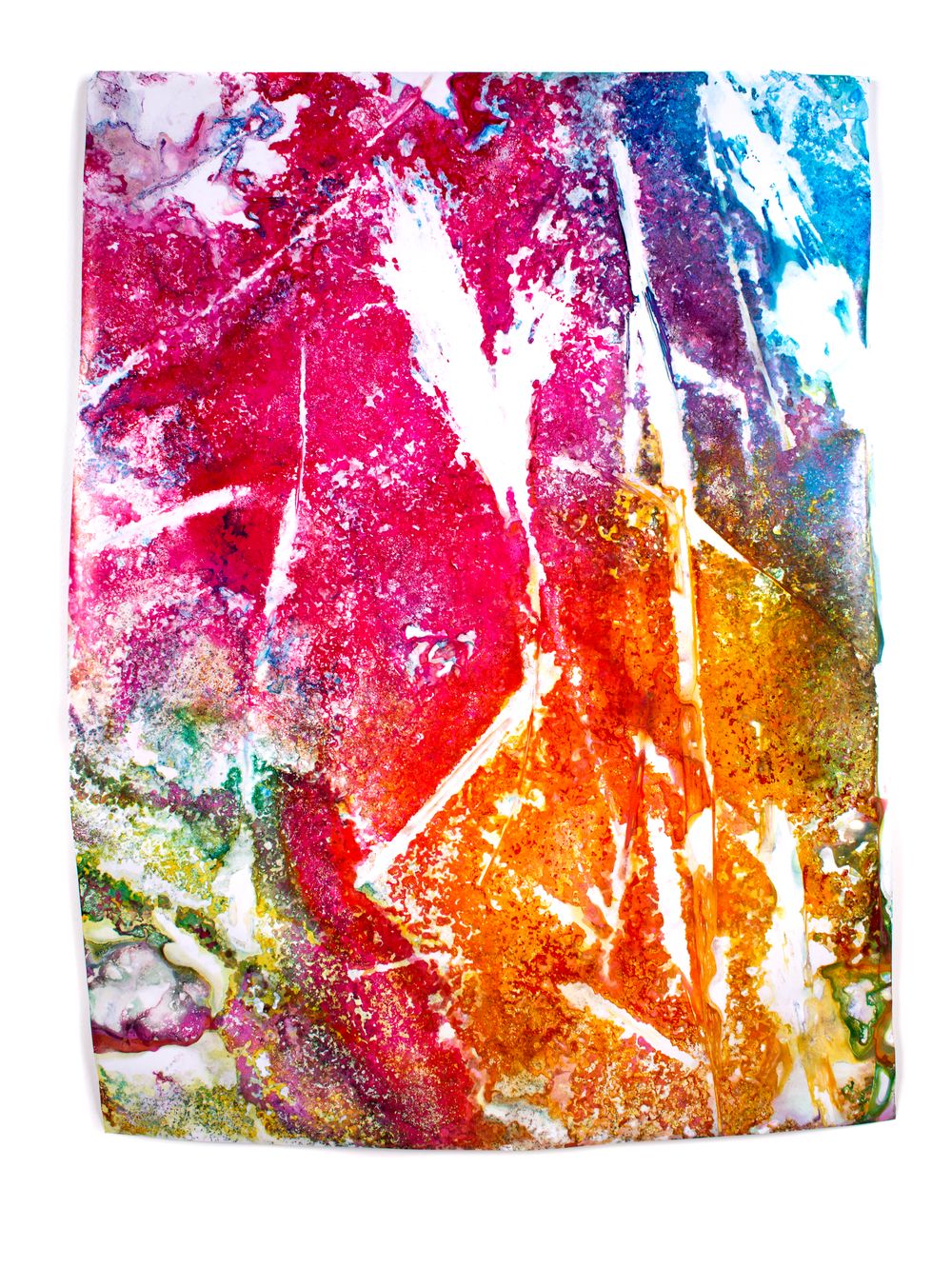
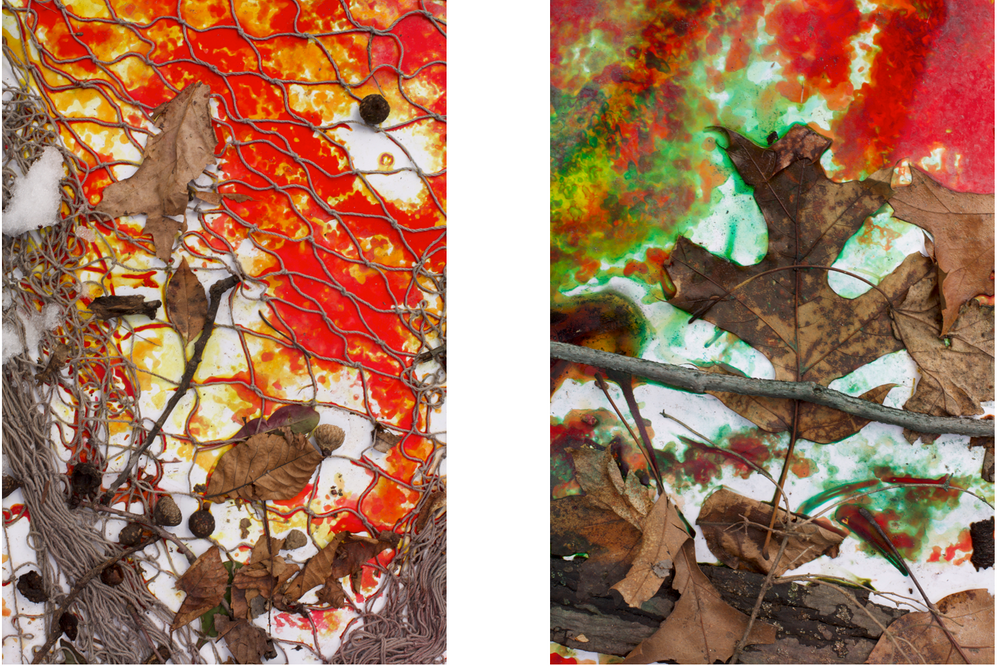
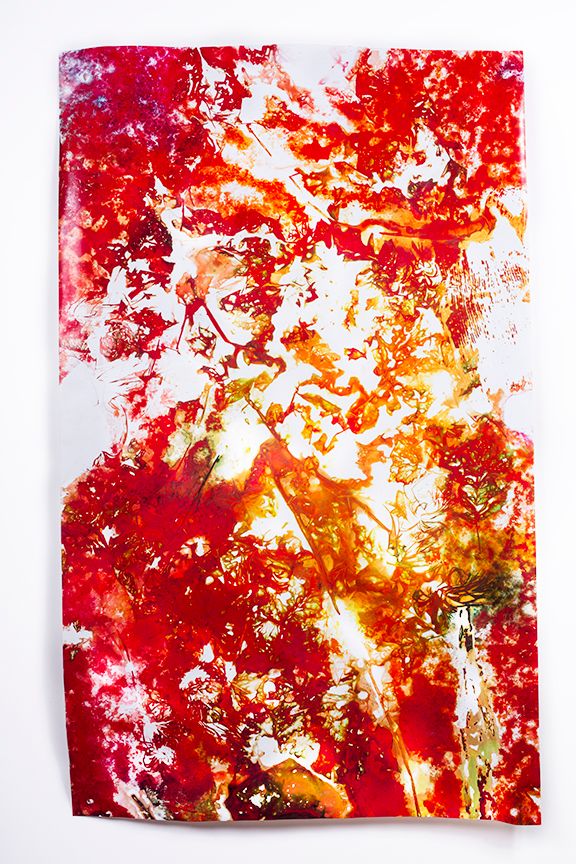
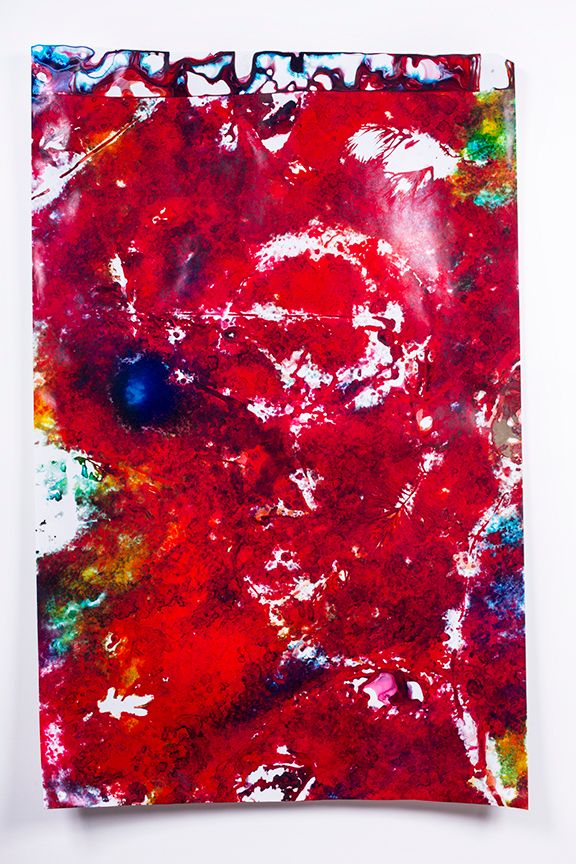

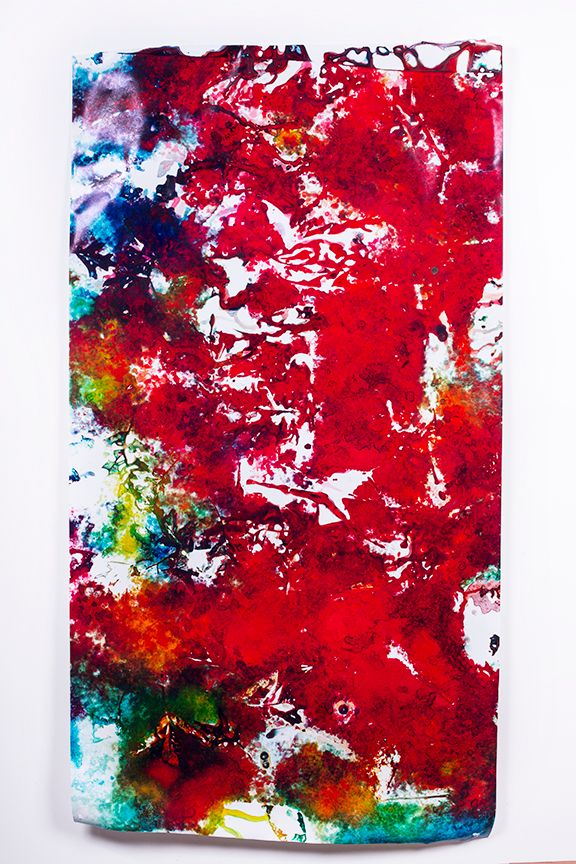
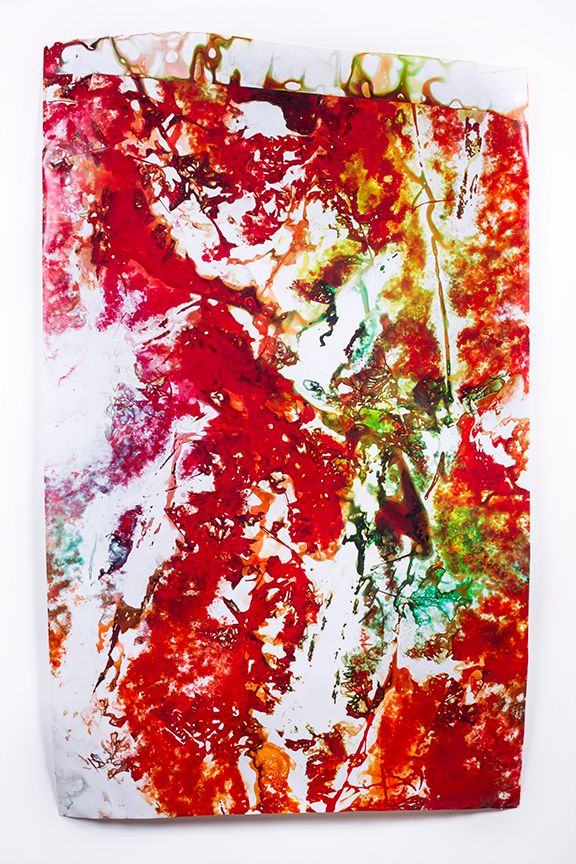
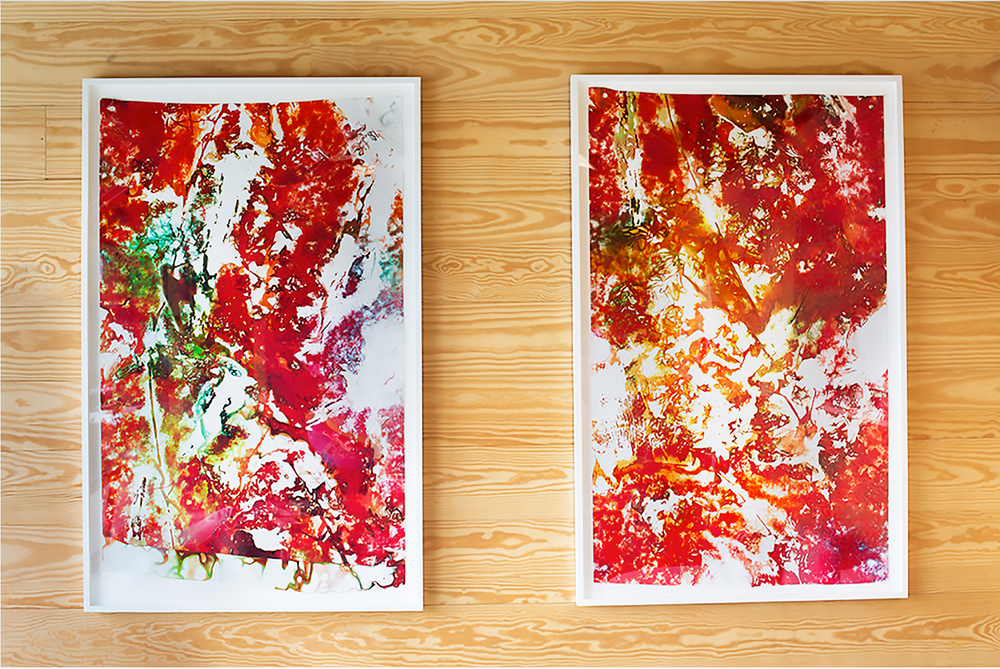
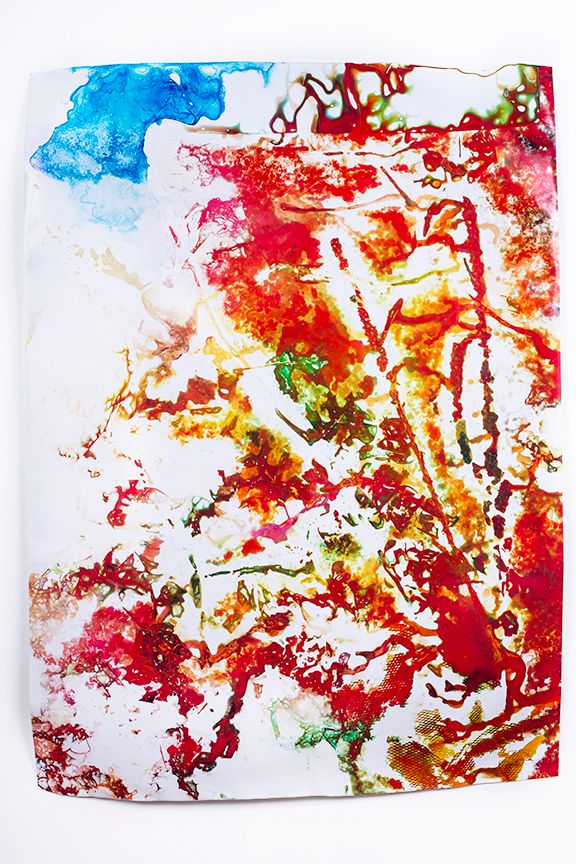
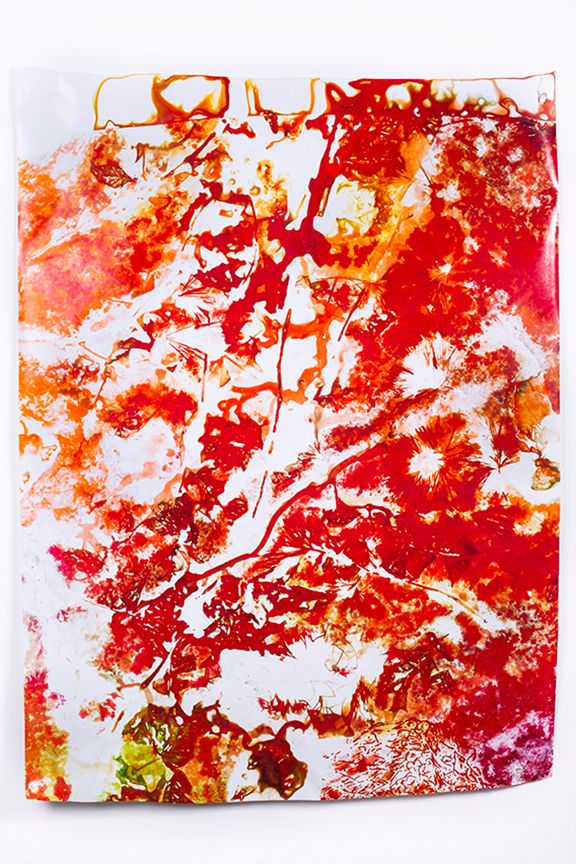
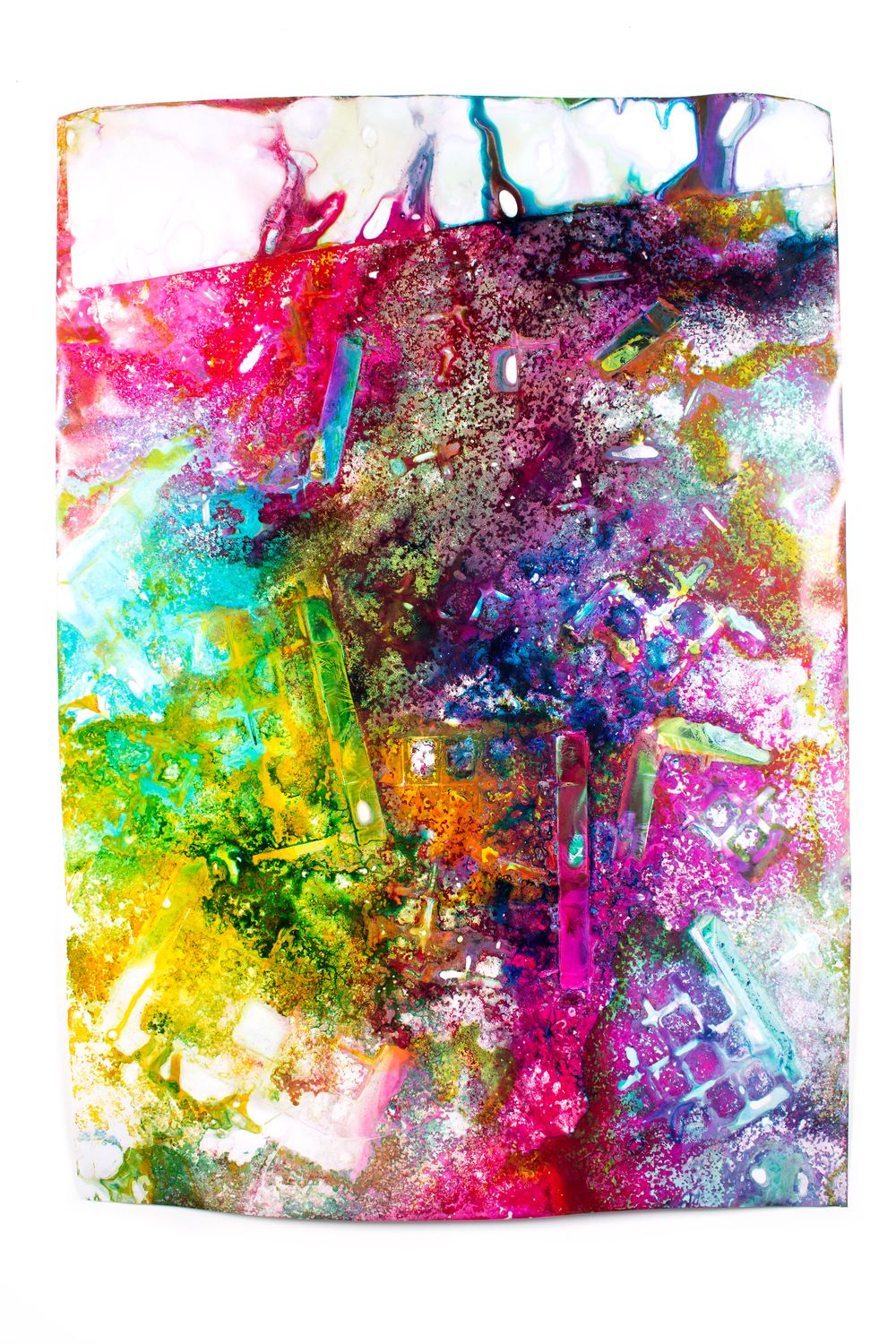
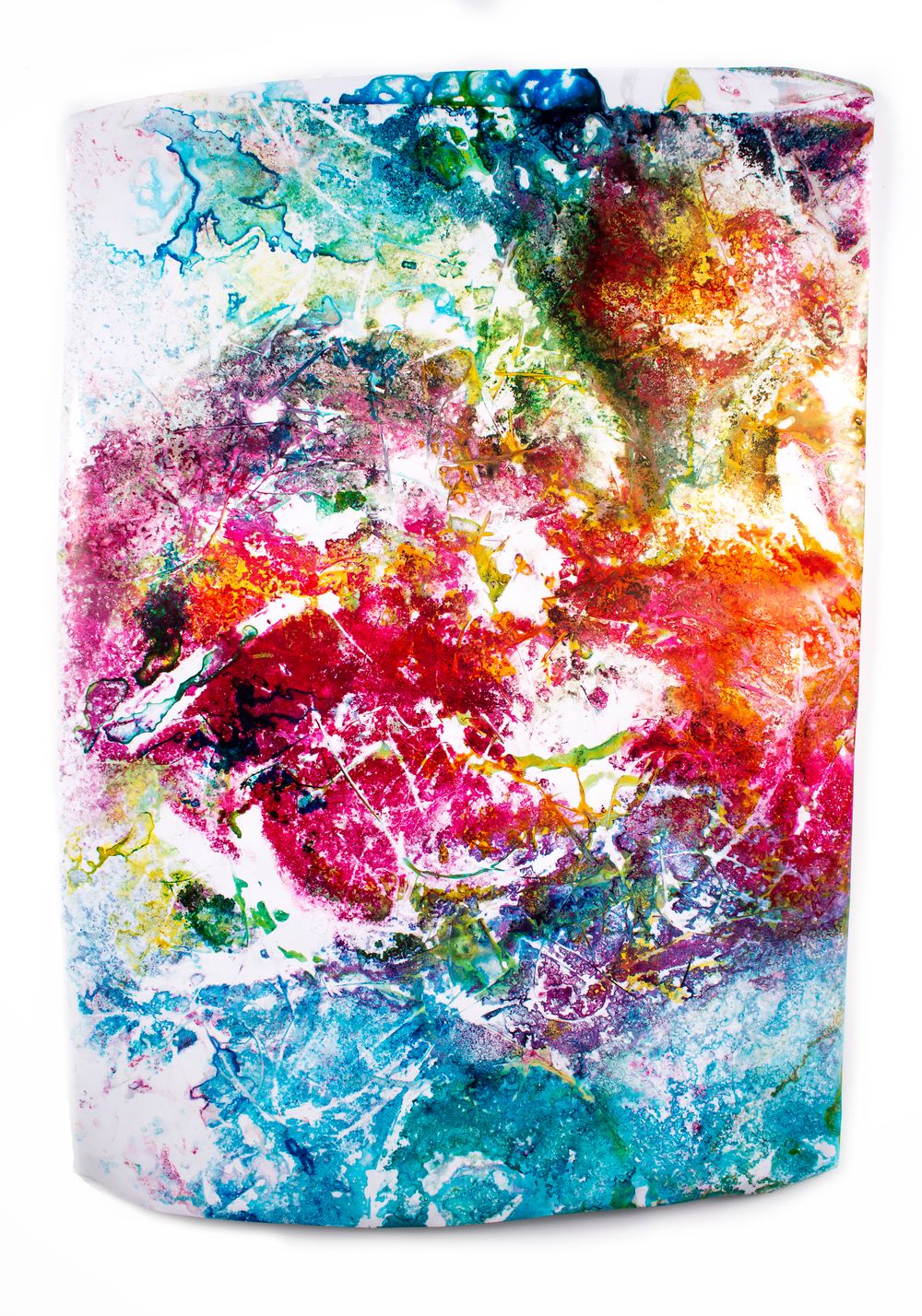

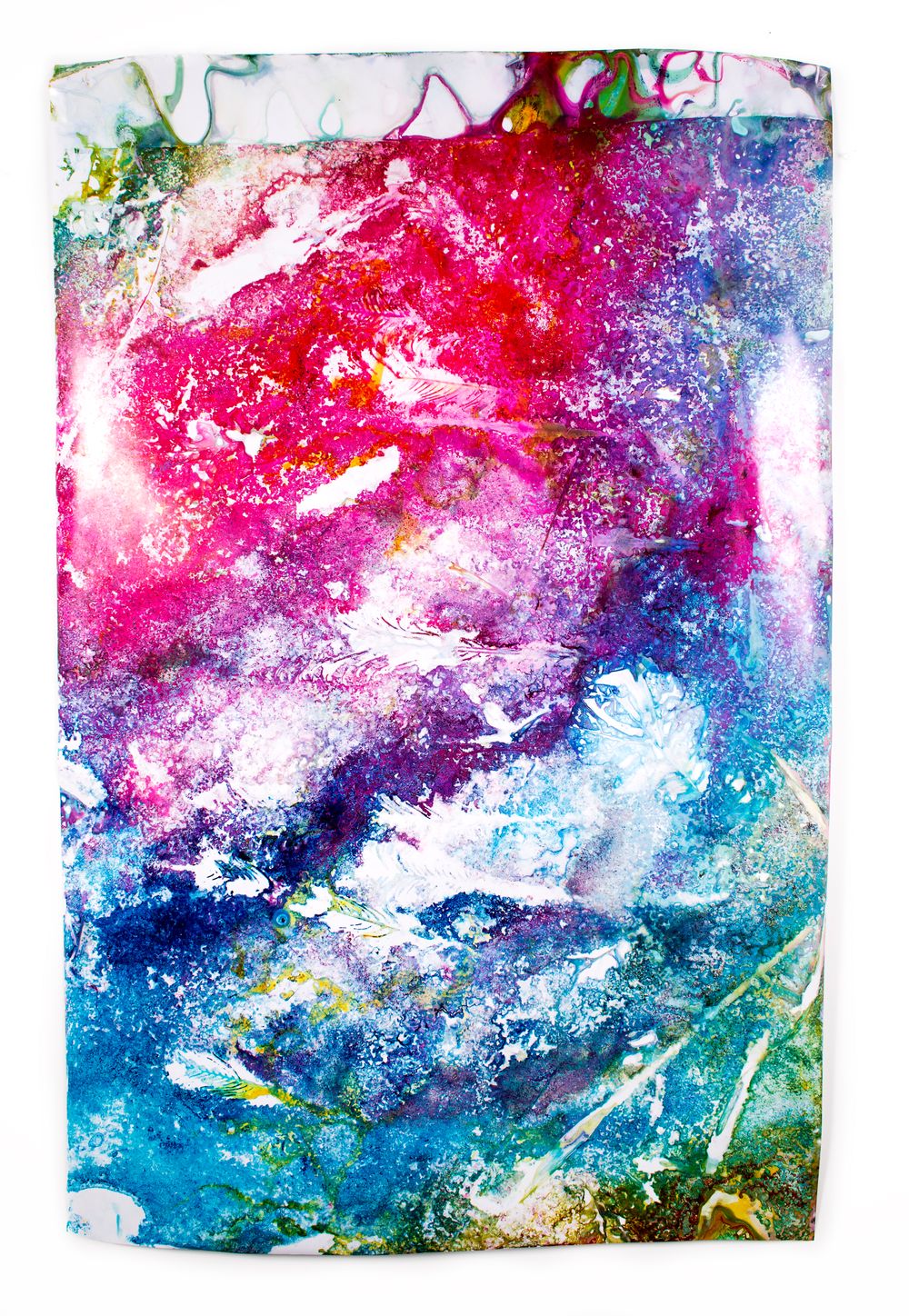
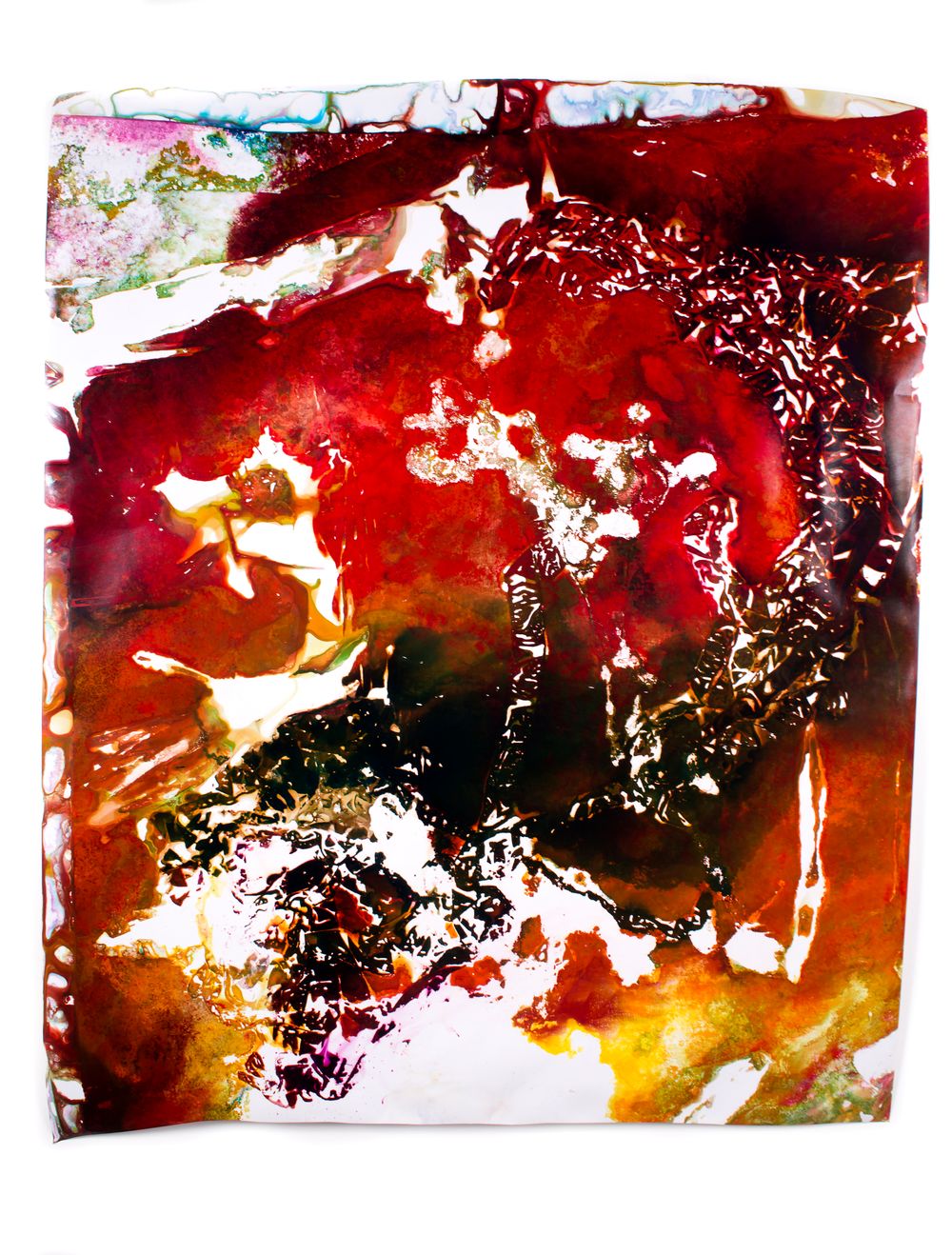

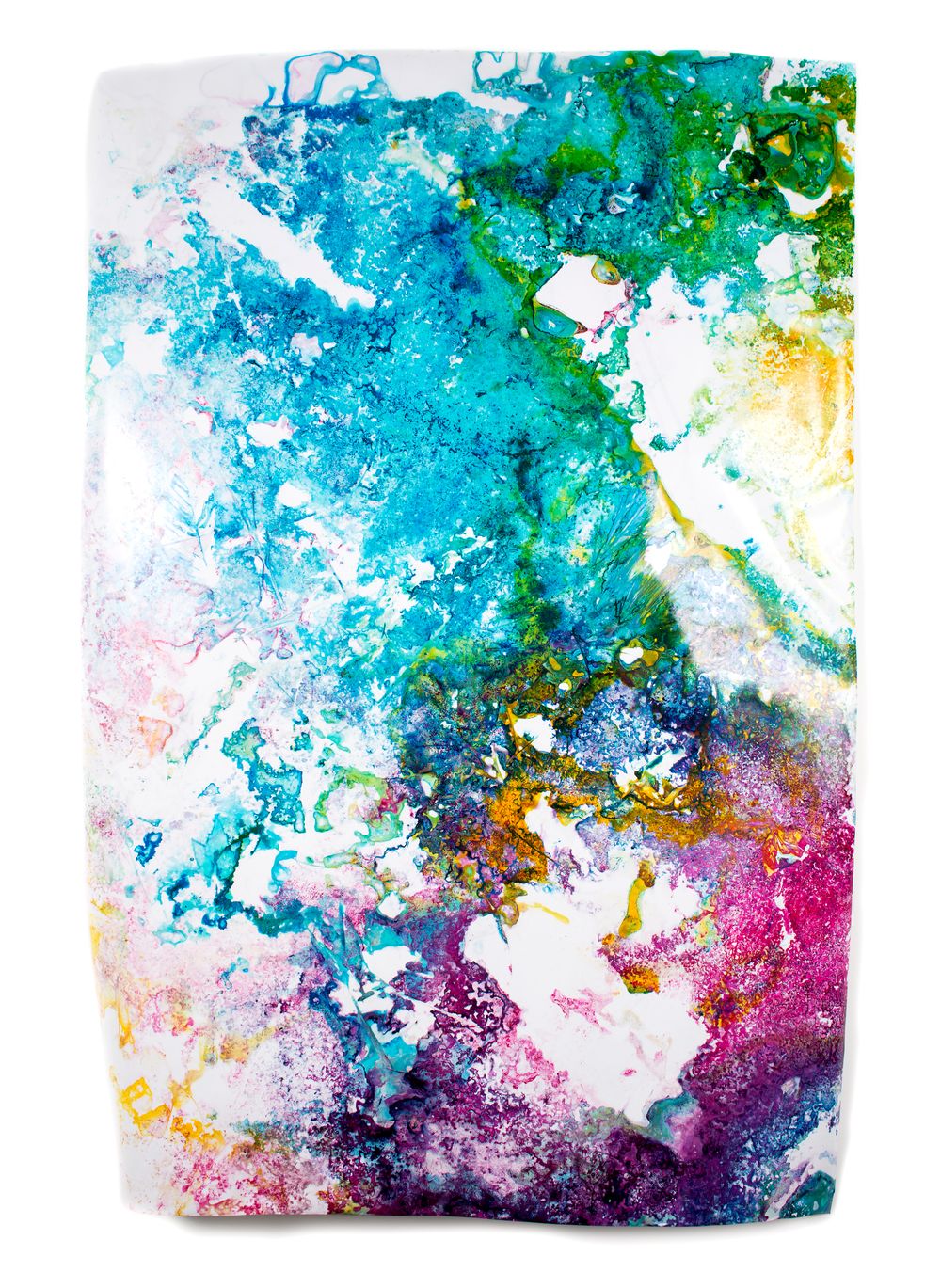
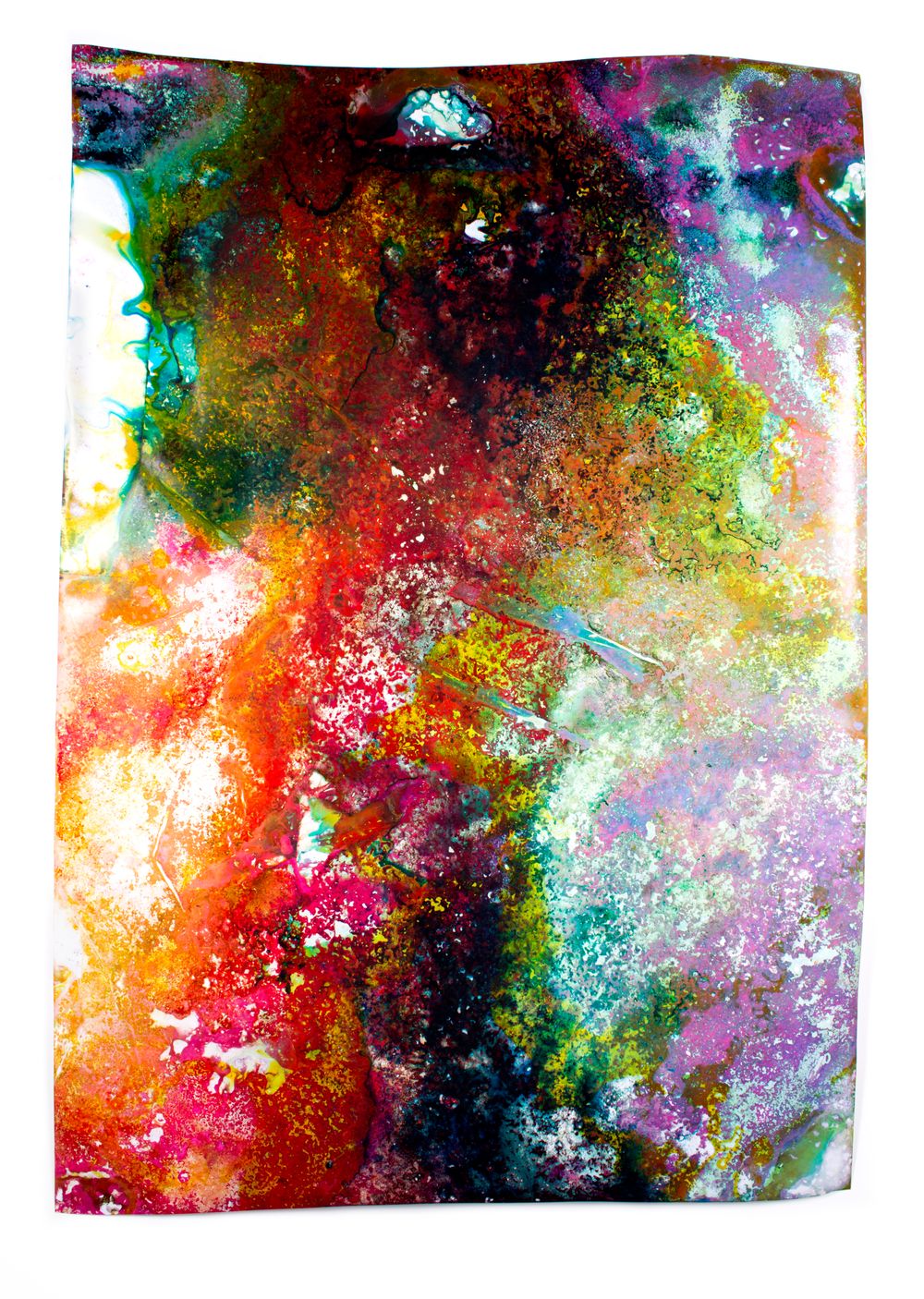
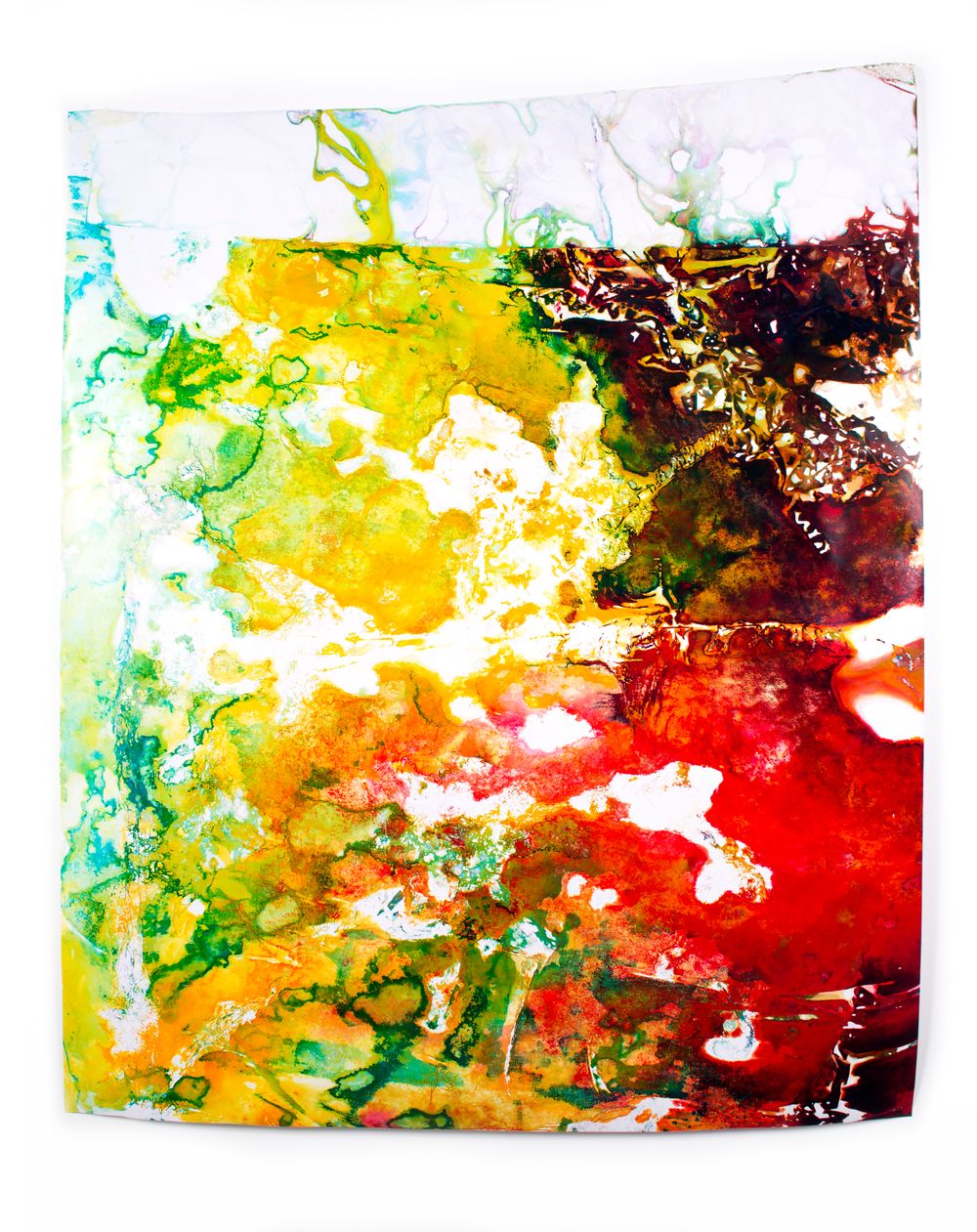
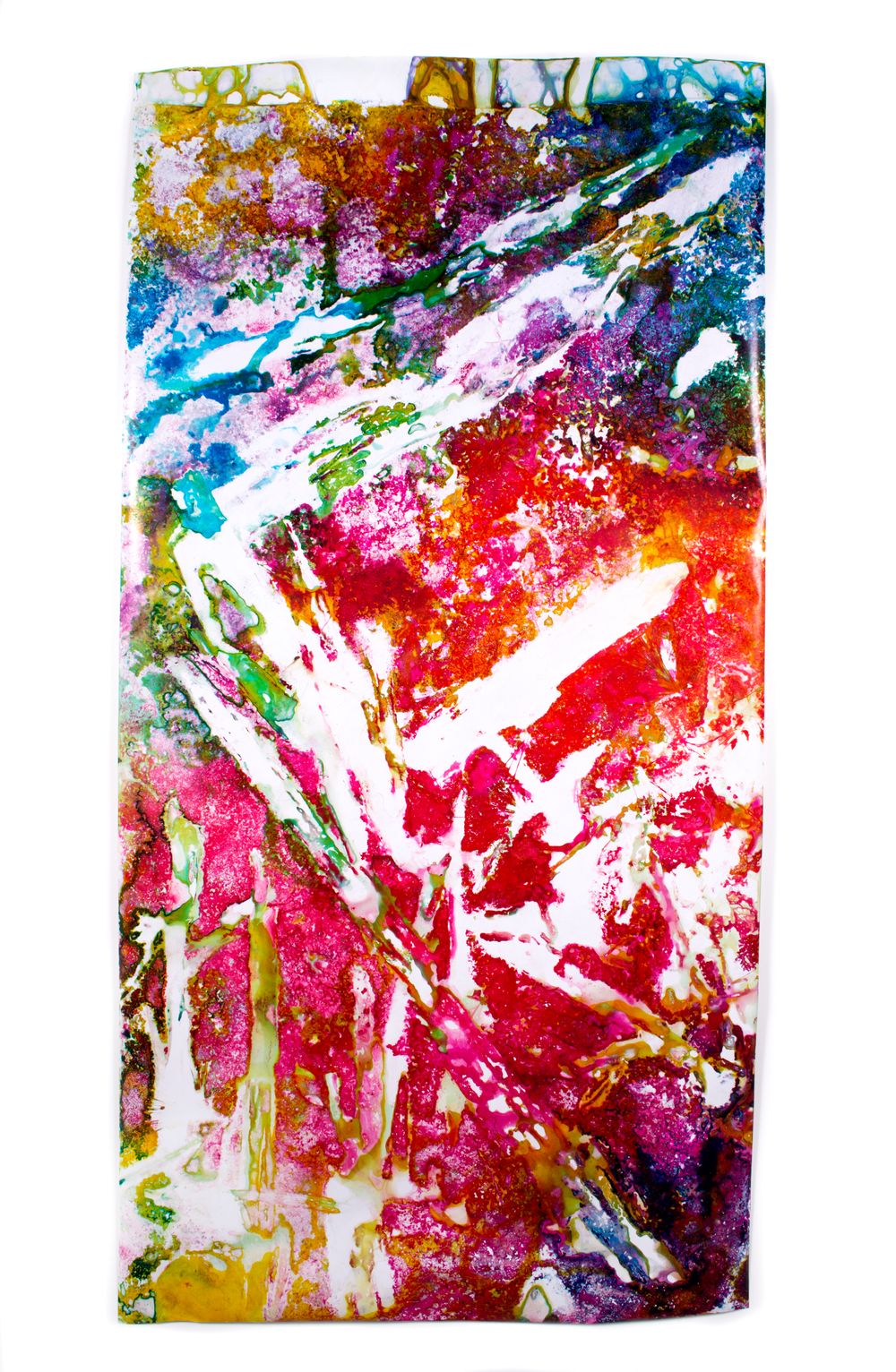
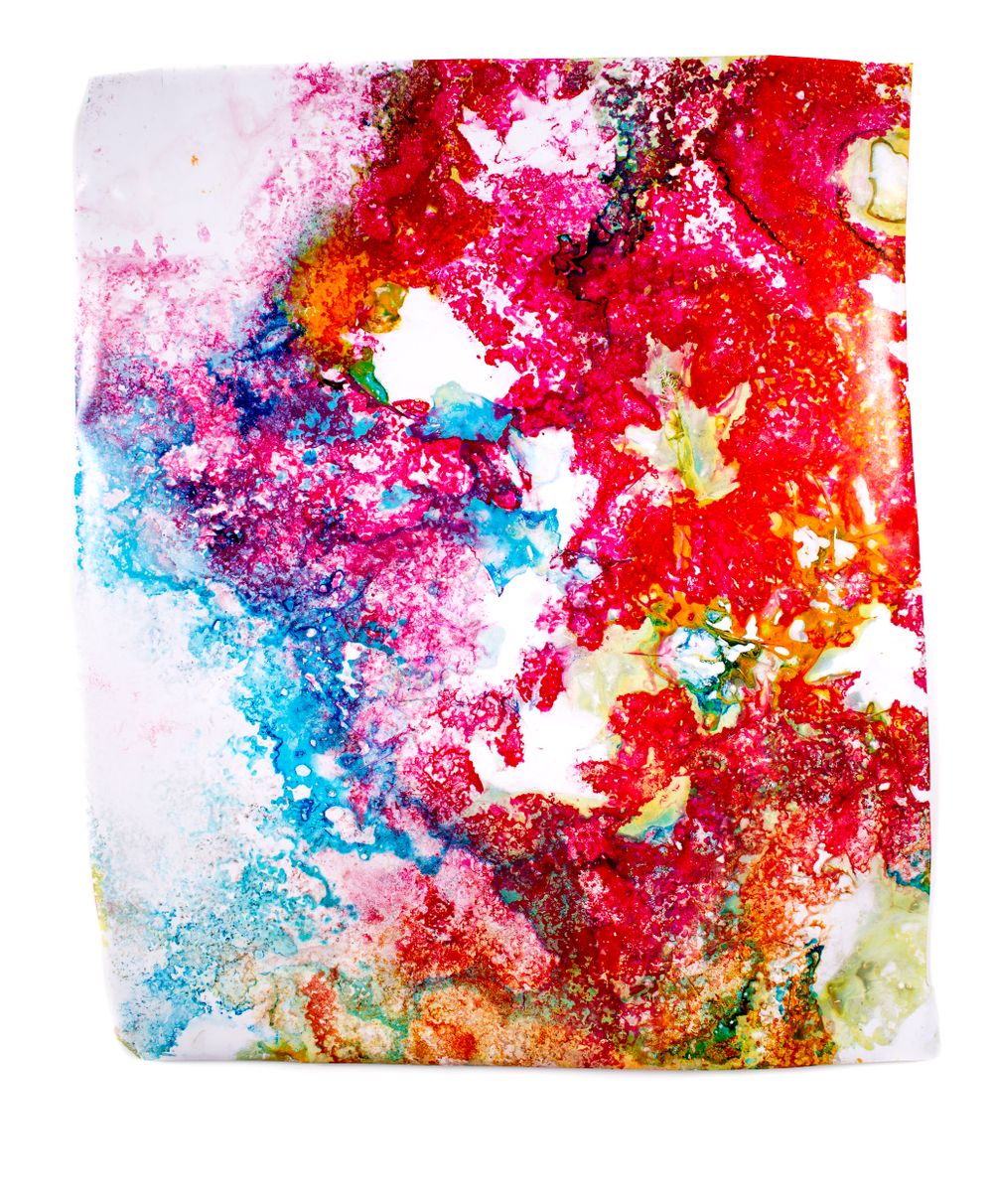
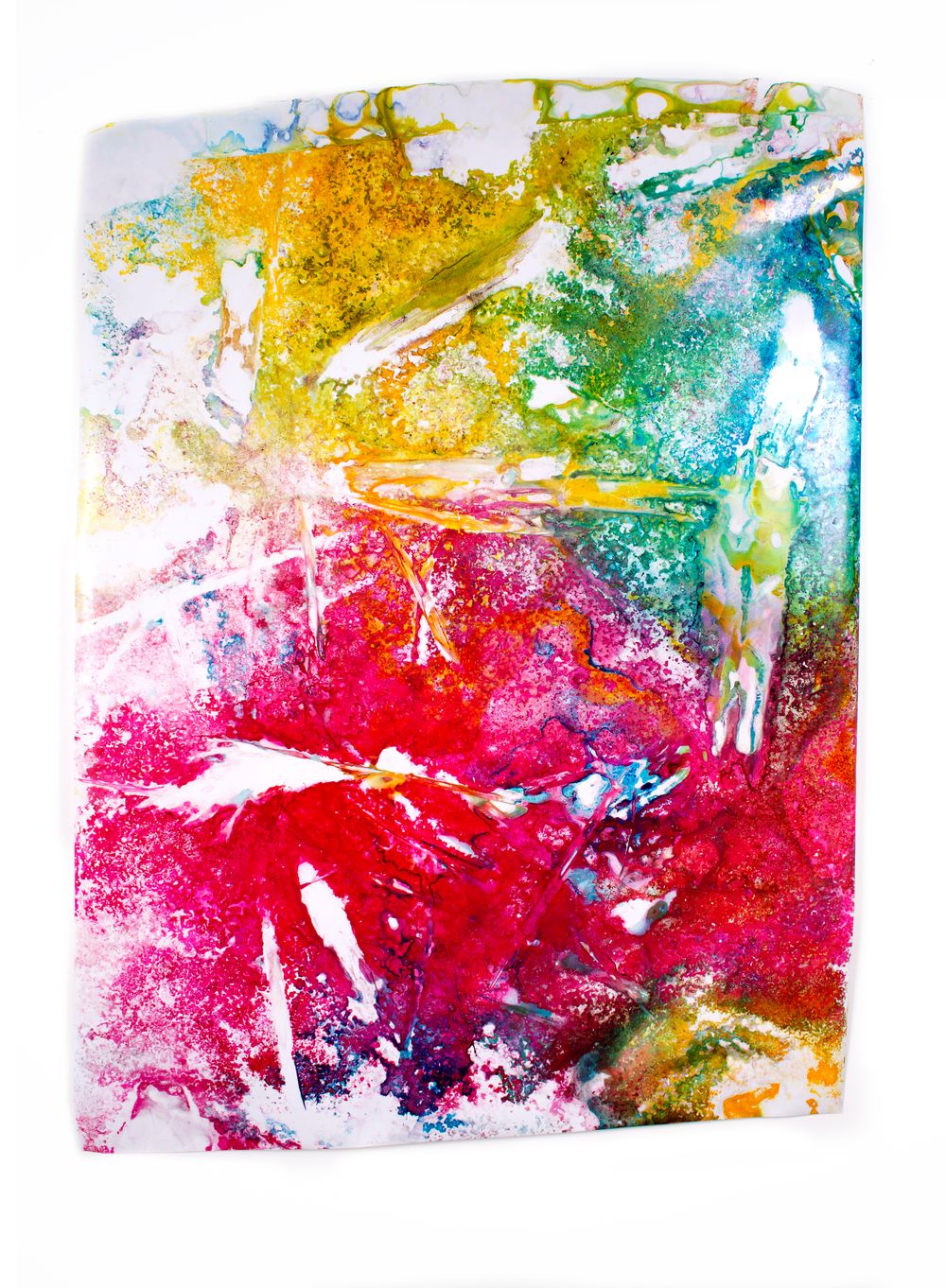
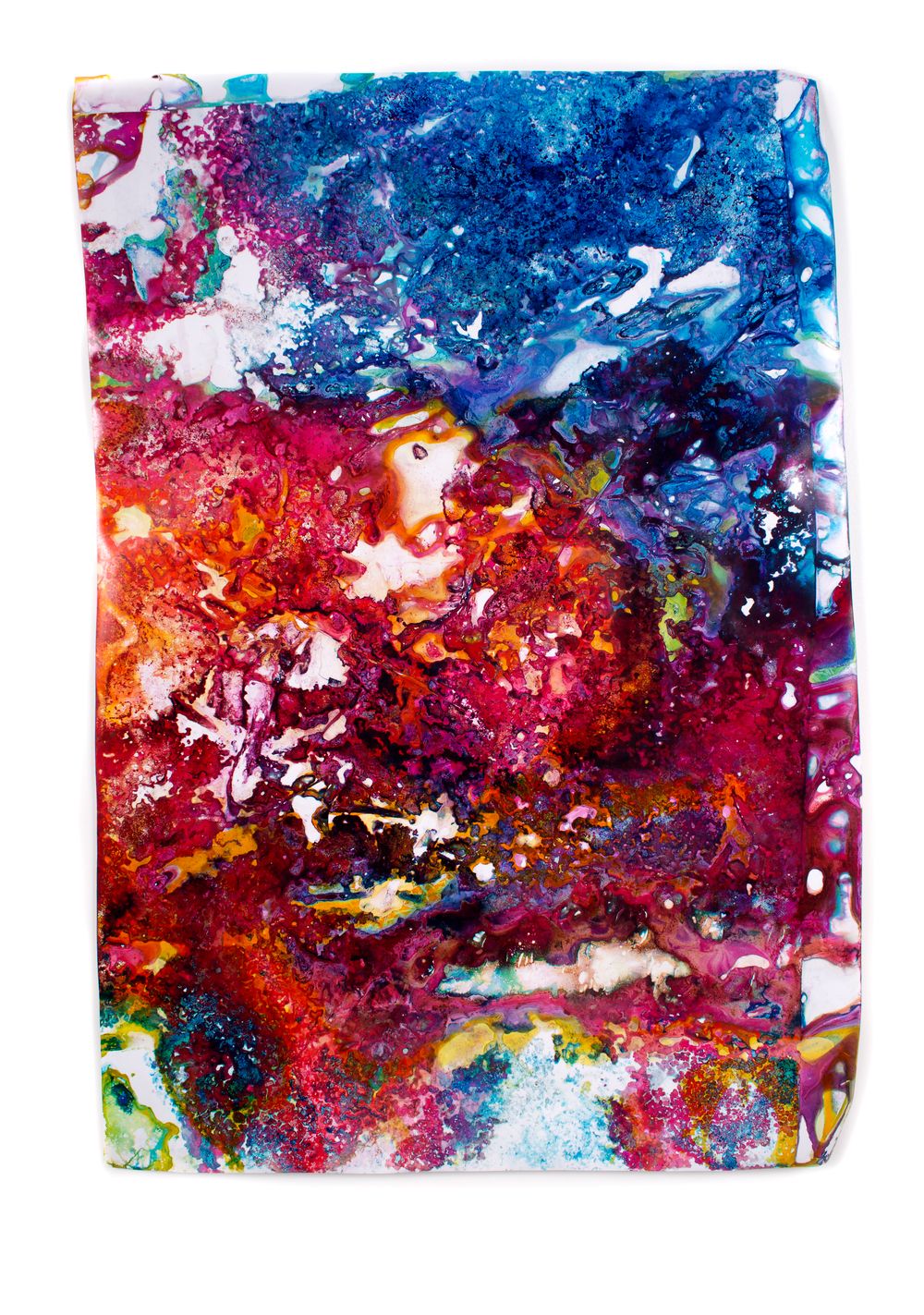
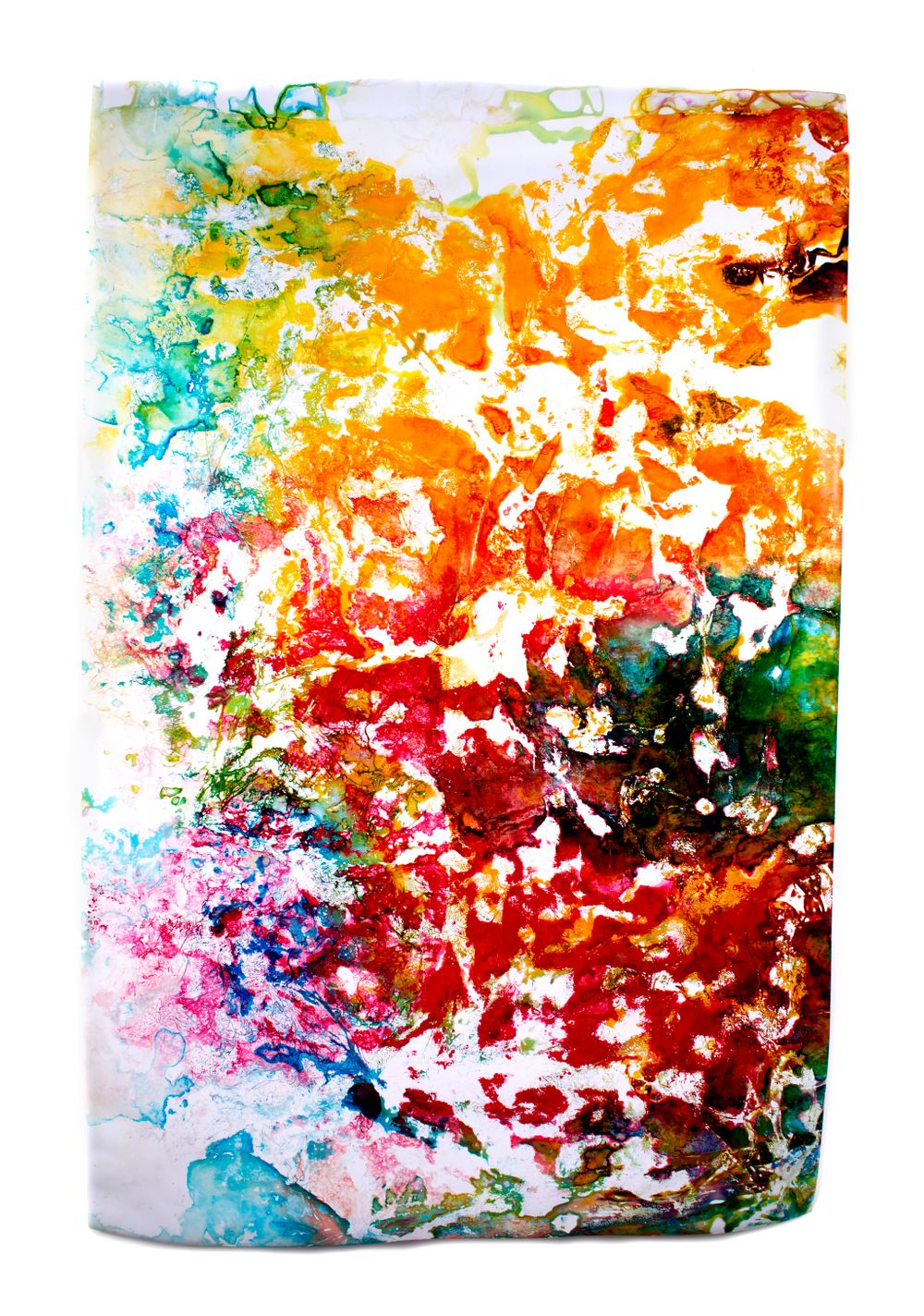
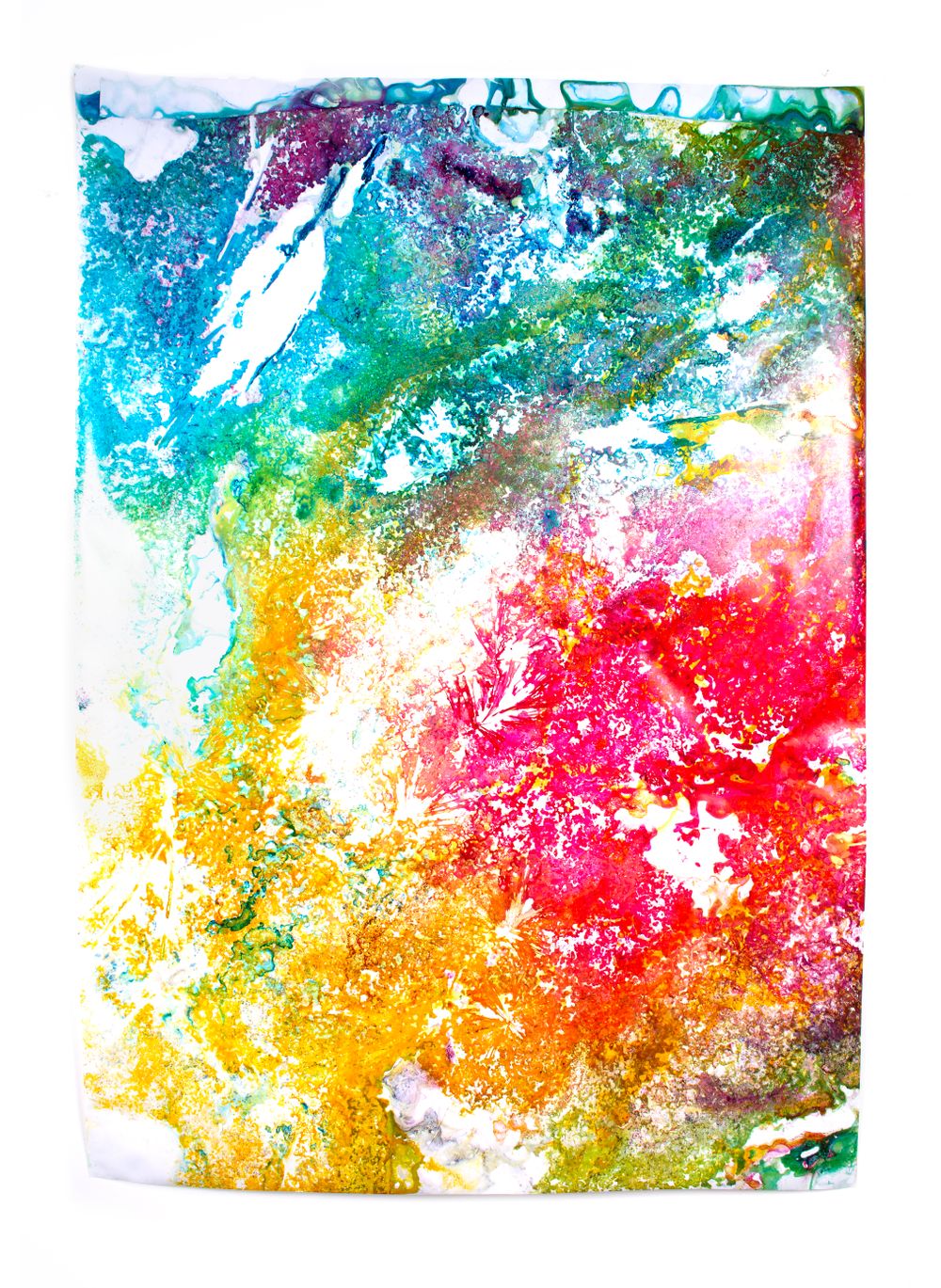
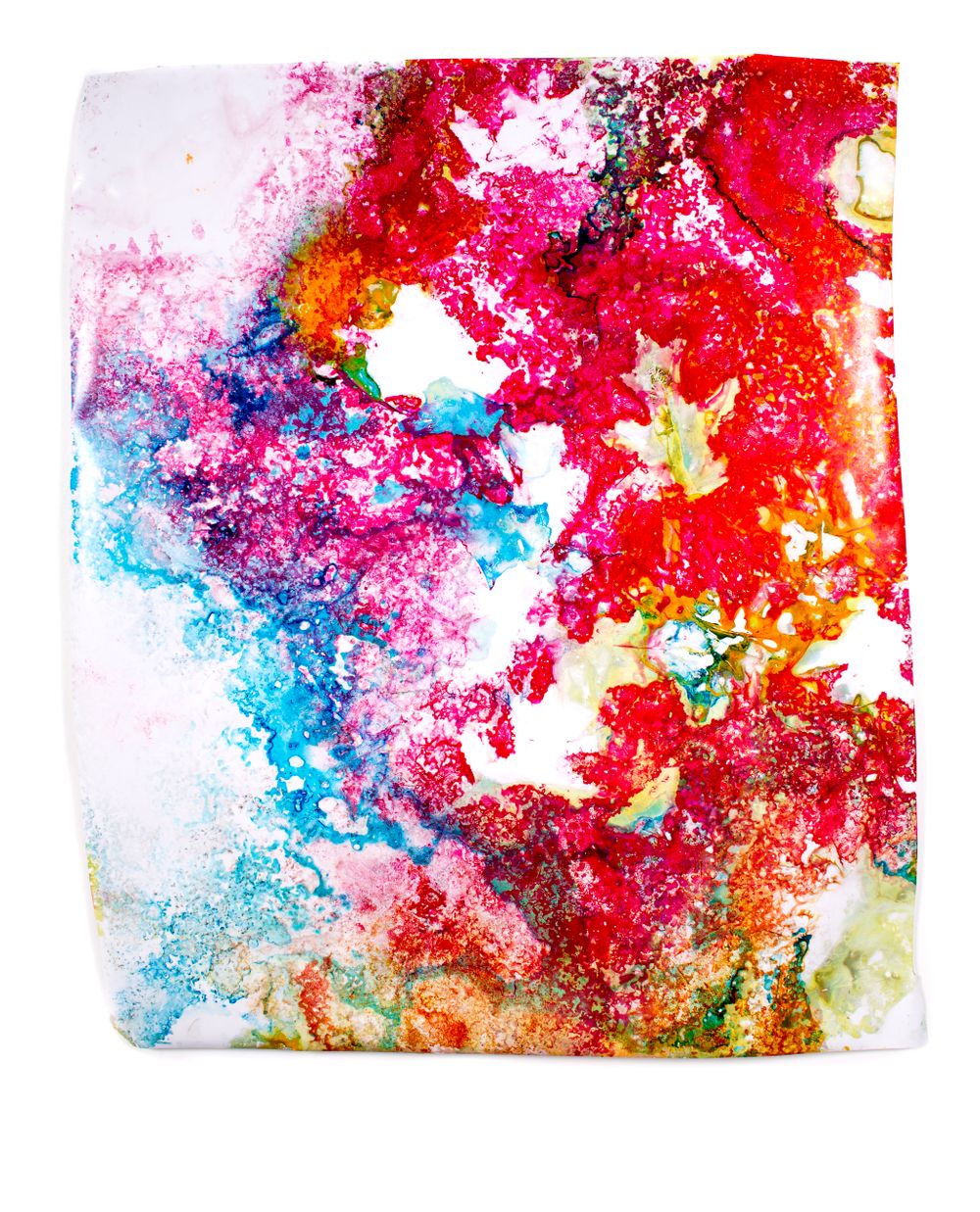
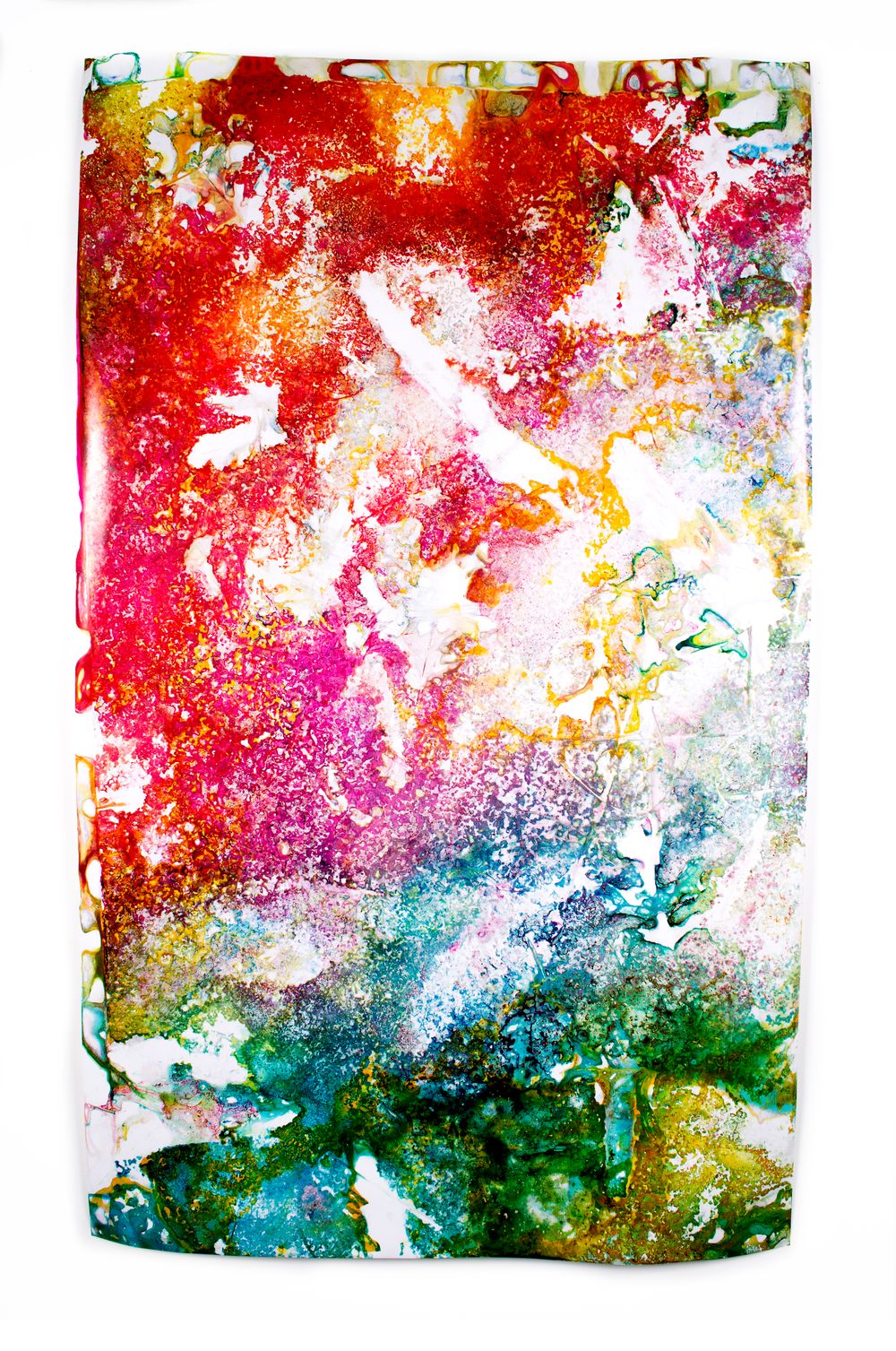
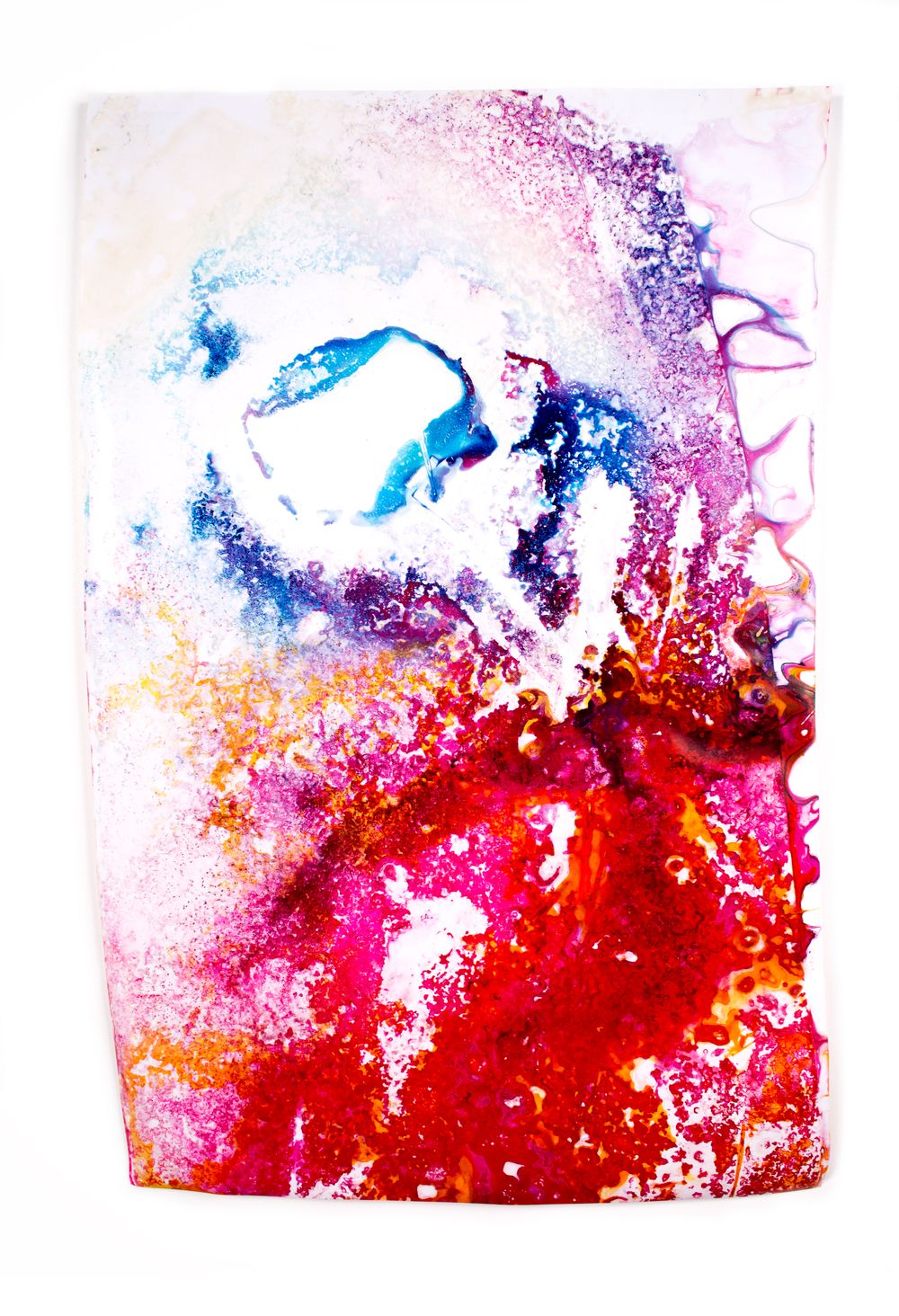

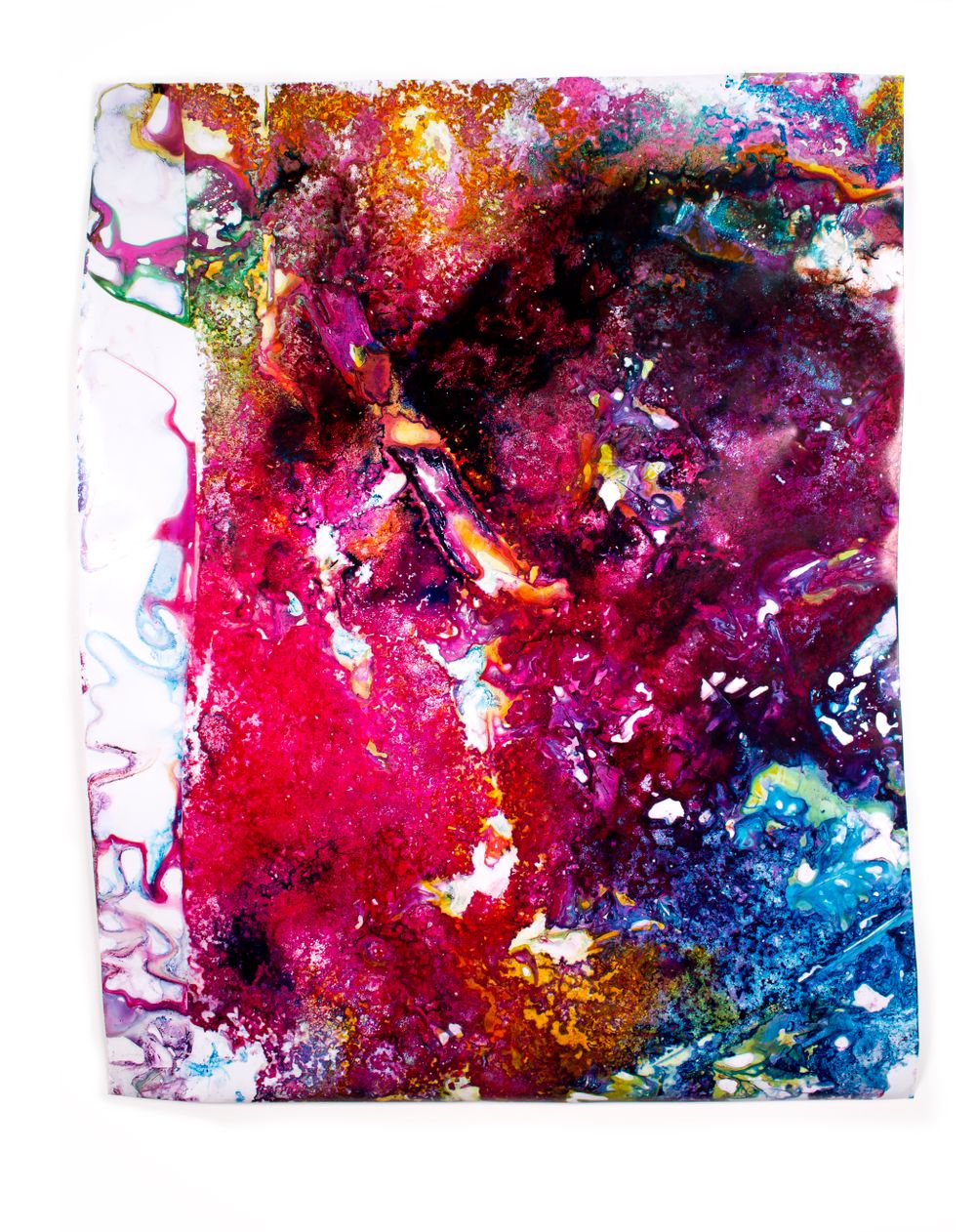
Snow Graph
This body of work explores imprinting and copying through digital printing materials—specifically printer paper and ink. The resulting images, or "graphs," are created without the use of a machine, instead employing a process that replaces mechanical intervention with nature itself. So far, snow has served as the primary natural agent, combining with ink and dye to form imprints on photo paper.
Before a snowstorm, a roll of photo paper is laid out on the lawn and covered with materials collected from the surrounding wooded area—sticks, leaves, trash, rocks, and other found objects. These items are arranged deliberately on the paper to construct the composition of the imprinted graphs. After snowfall, printer ink is applied by hand over the snow. The paper is then left in place as the snow gradually melts, imprinting the image over a period of days or even weeks.
Exposed to the elements, the paper begins to degrade—it disintegrates, becomes fragile, and accumulates dirt. While machines are designed to be precise and exact, my work embraces imperfection and the unpredictable results that arise when nature becomes the catalyst.